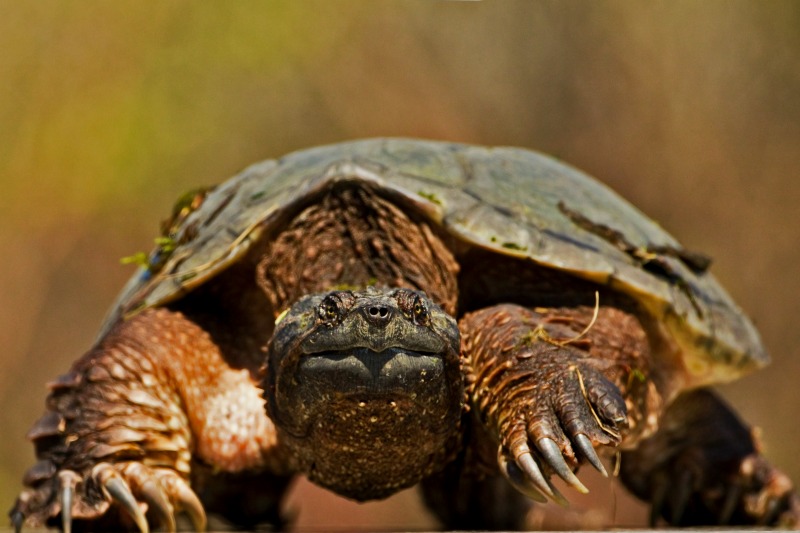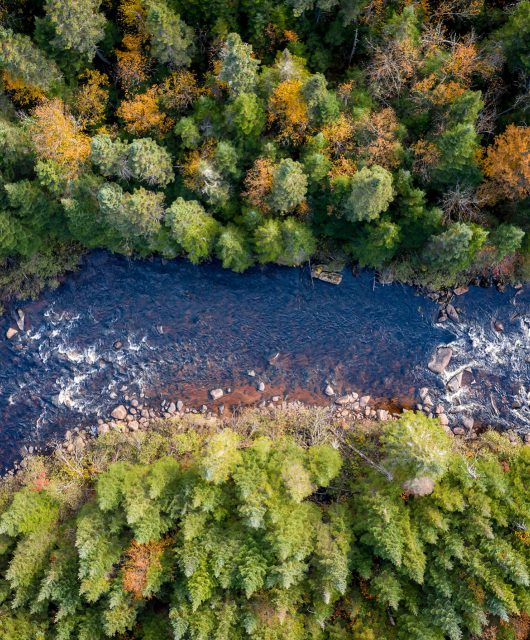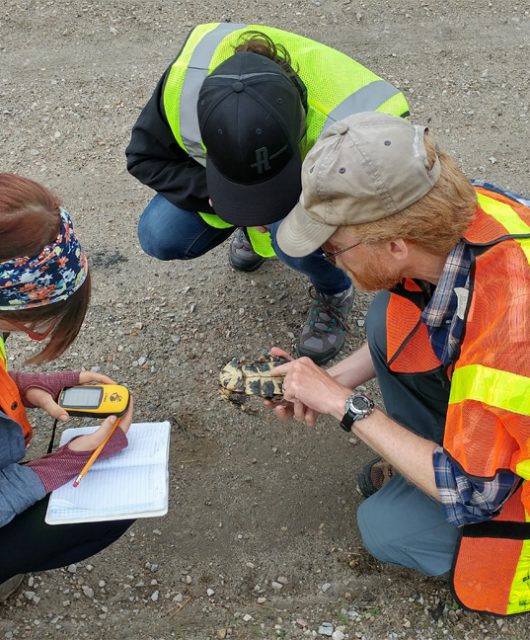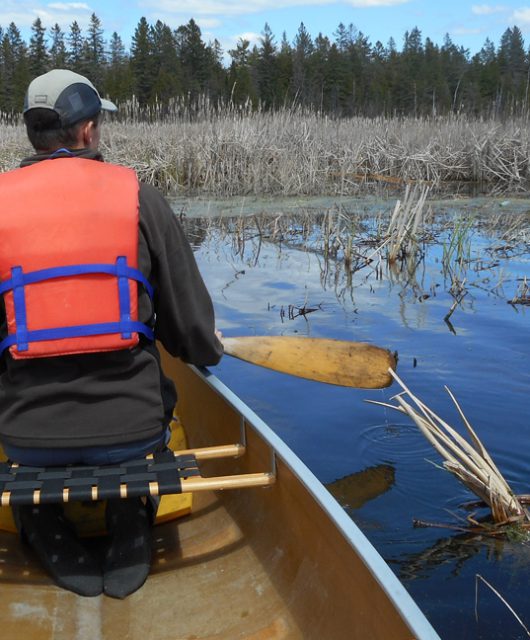
The following story was written by CWF intern, Allison Pritchard. Photo: Ted Busby
The cars in front of us slowed and slightly swerved. As we came to the point that the cars were swerving around, I saw a dark mass on the road. Before I had time to register that the dark mass was a turtle, Carolyn—a Senior Conservation Biologist at the Canadian Wildlife Federation—had exclaimed, “we have to see if it’s alive!” She maneuvered the car onto the shoulder of the road and was half way out of the car before I had even undone my seatbelt.
The turtle was belly up in the center of the highway right on a pedestrian crosswalk. Carolyn ran to the cross walk and pressed the button to stop traffic. She patiently waited for the cars to come to a halt then ran out onto the road and lifted the turtle by the side of the shell and rushed it off the pavement and out of harms way. She gently placed the turtle on its shell and, after a quick inspection, it became clear that it was a snapping turtle and that it was still alive! Without hesitation, she hurried back to the car and reversed it towards the turtle so she could load it in the trunk.
In the meantime, I was still trying to wrap my head around what I was seeing. I am from the West where we don’t have turtles. I was in shock and felt sick to my stomach as I looked down at the helpless turtle and saw the small puddle of blood left on the road where it was hit.
A man had also stopped his car on the other side of the road and ran over as Carolyn carefully placed the turtle in the back of her car. He asked if there was anything he could do to help and said, “I don’t know where the turtle came from – there’s no water around here”. Carolyn responded, “There used to be habitat here before we developed it”. That statement had a profound impact on me. At that moment, everything that I have been learning in school about habitat loss was no longer just a concept, but something meaningful, significant and very real.
We took the turtle back to the Canadian Wildlife Federation office where we got a box to put the turtle in. While we were driving the turtle had managed to flip itself onto its feet and, for the first time, I saw the state of its injuries. The turtle’s shell was cracked in several places, there was blood dripping down its back and at the bottom of the shell some of the turtle’s innards were exposed through one of the cracks. We transferred the turtle as carefully as we could into the box and I volunteered to drive it to the Rideau Valley Wildlife Sanctuary where its injuries could be treated.
As I drove, I had time to process what I just seen and experienced. As I began to understand what had happened I burst in to tears. I was emotional because I knew the turtle was in pain. I was upset because I know that events like these happen every day and there is nothing that animals can do to prevent that. I was overcome with a feeling of compassion, helplessness, guilt and anger all at once.
If we had continued to drive past the turtle without checking to see if it was alive, I would have never felt these emotions and there is no way of knowing what the fate of the turtle would have been. It would have been easy to turn my head as we drove by, but I feel a large reason why some wildlife are so threatened is because we turn our heads too often.
Unfortunately the turtle passed away that night; however, the Rideau Valley Wildlife Sanctuary was able to save the 40 eggs she was carrying and is now incubating them. Although one life was tragically lost, 40 lives have been given a second chance.





1 comment
I was very sad to read this story. Having said that, I must tell you that it is a sad fact of life on Glen Smail Road in Edwardsburgh/Cardinal township. I watch these turtles (snappers and painted) moving slowly across my lawns on their way to the gravel shoulders of our road to lay their eggs only to see the local drivers aim for them whenever possible. It is a sport out here where the turtles have no chance. I carry a small shovel in my car which I use to move turtles off he centre of the road where they are warming themselves to safety at the side of the road. The area has habitat suitable to all kinds of creatures and I look forward every May and June to the turtles laying their eggs on my property and using the property as a safe passage to the sandy/gravelly shoulders of the roadway. The numbers of turtles have greatly diminished over the past 20 years and it makes me very sad not being able to help their plight I will continue to do my part when ever I can but I still feel I should be doing more to educate the drivers in the area about taking care to slow down during the egg laying weeks and to safely go around turtles who are trying to traverse from one side of the road to the other.